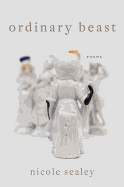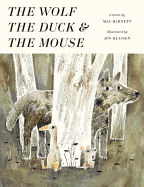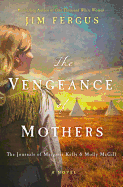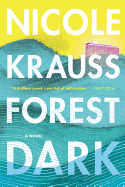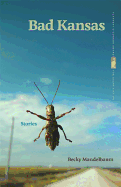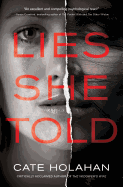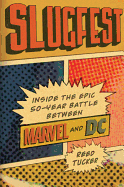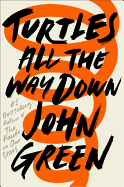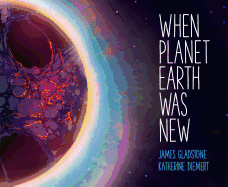Friday, October 13, 2017
The world of Paolo Bacigalupi's Ship Breaker series (Little, Brown) is sodden with color: inky blacks, liquid golds, arterial reds. Every page is damp with humidity, sweat and blood. It depicts a future United States, gruesomely affected by global warming. The heavily populated coastal cities of the past are underwater and scavenged cities have been built atop; warring militias of primarily child soldiers terrorize the nation.  In the first book, Ship Breaker, teen Nailer is a scavenger, climbing through old shipwrecks to pull out copper wire to sell to big companies. Nailer's father is terrifyingly powerful--an abuser and an addict, he looks out for only himself. When Nailer stumbles upon an incredible scavenge, he finds himself battling his father while surprisingly aided in his fight by Tool, the bioengineered war beast his father employs.
In the first book, Ship Breaker, teen Nailer is a scavenger, climbing through old shipwrecks to pull out copper wire to sell to big companies. Nailer's father is terrifyingly powerful--an abuser and an addict, he looks out for only himself. When Nailer stumbles upon an incredible scavenge, he finds himself battling his father while surprisingly aided in his fight by Tool, the bioengineered war beast his father employs.  The Drowned Cities opens with Tool imprisoned, almost dead. He escapes and is found and healed by Mahlia and her friend Mouse, both refugees of the Drowned Cities war. Mahlia feels indebted to Mouse: were it not for his intervention, the soldier boys who cut off her hand would have done much worse. Now, though, a militia takes Mouse prisoner, and Mahlia convinces Tool to enter the warring Cities to save her friend.
The Drowned Cities opens with Tool imprisoned, almost dead. He escapes and is found and healed by Mahlia and her friend Mouse, both refugees of the Drowned Cities war. Mahlia feels indebted to Mouse: were it not for his intervention, the soldier boys who cut off her hand would have done much worse. Now, though, a militia takes Mouse prisoner, and Mahlia convinces Tool to enter the warring Cities to save her friend.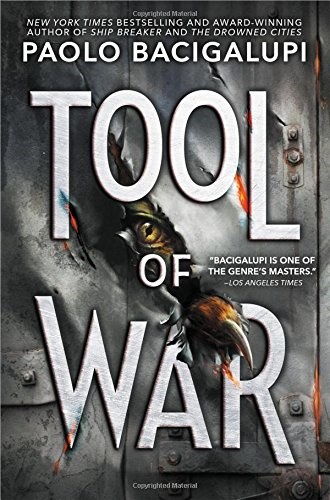 Tool of War (published October 10, 2017) builds on Mahlia and Tool's story, picking up after Tool, the leader of an army of child soldiers, has won the Drowned Cities war. The half-man, designed by military scientists to be a loyal slave to his master, is now being hunted by the owner he (somehow, years ago) disobeyed. A complicated creature, Tool tries to save his found family (his "pack") as he uses his fluency in war to take down his hunters and maintain his sovereignty. --Siân Gaetano, children's and YA editor
Tool of War (published October 10, 2017) builds on Mahlia and Tool's story, picking up after Tool, the leader of an army of child soldiers, has won the Drowned Cities war. The half-man, designed by military scientists to be a loyal slave to his master, is now being hunted by the owner he (somehow, years ago) disobeyed. A complicated creature, Tool tries to save his found family (his "pack") as he uses his fluency in war to take down his hunters and maintain his sovereignty. --Siân Gaetano, children's and YA editor
Solar Bones
by Mike McCormack
The spirit of Marcus Conway sits in his kitchen on All Soul's Day and ruminates on a conventional life. Solar Bones by Mike McCormack (Forensic Songs) is a luminous poem cloaked in the form of a novel.
Marcus Conway was born and raised in the same Irish village where he settles as an adult. His work as a civil engineer causes him to see the world as different manifestations of interconnectivity. As he recalls the details that made up his life, he realizes that hindsight offers clarity that was not available at the time. He marvels that "all this comes to me now in such an unbroken torrent... sitting here at this table... faces and words and all sorts of fragments falling through me."
With lyrical prose woven in one long free-association, punctuated with pauses and space for reflection, Marcus reviews the chapters that create his own story. He considers the substance of everyday lives with exuberant, insightful prose and remembers "all the things which crossed the grain of our days, losing some of their gloss and sheen in their contact with us... leaning to their purpose with greater ease and balance." Sentences swoop and soar with flowing, almost musical language, building to a climax of insight and grace.
Solar Bones has won the Goldsmiths Prize and other awards since its initial publication in Ireland, and with it McCormack proves himself to be a genius of language and form. --Cindy Pauldine, bookseller, the river's end bookstore, Oswego, N.Y.
Discover: Solar Bones uses brilliant verbal acrobatics to showcase the dignity of a conventional man's life.
The Vengeance of Mothers
by Jim Fergus
Jim Fergus returns to the story of One Thousand White Women: The Journals of May Dodd (1998), about a fictional 1880s government plan to assimilate Native Americans by swapping Caucasian women for Cheyenne horses. In The Vengeance of Mothers, a Chicago journalist receives the journals of women who participated in the Brides for Indians program.
Hopeful as they headed west in 1876 to marry warriors, most of the volunteers were escaping unjust imprisonment or abuse. Unbeknownst to these women, the first "brides" met grisly fates, not from the Cheyenne, but when army troops attacked their village, killing Indians and whites indiscriminately. They were traveling into a post-massacre retaliation, and just seven of the second group survive an Indian attack on their train.
The journals of twins Meggie and Susie Kelly (among the first group of volunteers), as well as Molly McGill (of the second wave), chronicle their experiences. The twins, grieving their infants' deaths, are determined to kill every soldier they see; Molly focuses on making a new life with the Cheyenne. Fergus alternates between Meggie's coarse, unschooled voice and former schoolteacher Molly's more sophisticated language. Each narrator describes brutal battles with the U.S. army, while finding love and tenderness among the Indians and the white women who they share their fate.
Fans of One Thousand White Women, a book club favorite for 20 years, will recognize familiar characters in The Vengeance of Mothers, but newcomers to Fergus's imagined intermingling of Caucasian women and the Cheyenne people will easily step into this incredible spinoff from American history. --Cheryl Krocker McKeon, manager, Book Passage, San Francisco
Discover: Jim Fergus's story of white women who volunteer to marry Plains Indians continues through the diaries of a second group of brides.
Forest Dark
by Nicole Krauss
A National Book Award finalist and shortlisted for the Orange Prize, Nicole Krauss (The History of Love; Great House) sets Forest Dark largely in Tel Aviv, where her two protagonists are unsettled and transformed from their previous lives in New York City. Jules Epstein is an effervescent scholar in his 60s who methodically jettisoned his art collection, Upper West Side trappings and significant wealth to move into a slummy Tel Aviv apartment. From there, he mysteriously disappears, leaving his three children to sort out the details. Sandwiched into the third-person story of Epstein, first-person chapters tell of an unnamed mid-40s woman whose marriage is broken and new novel is stuck in neutral. She holes up in Tel Aviv's hulking seaside Hilton hotel and tries to bring her book back to life. A local scholar tracks her down to involve her in a project, filming a Kafka play and mining a surprising cache of Kafka's unpublished papers.
Neither Epstein nor the novelist meet, but both are on quests to understand their places in the contrasting worlds of New York and Israel, and in their Jewish families and history. Less interested in the dramatic, Krauss focuses on how her two protagonists intellectually and emotionally handle their respective pilgrimages. Along the way, Forest Dark dips into Freud, Descartes, Kafka and the Torah. If, as the Dante source of her title suggests, her protagonists have found themselves "in a forest dark,/ For the straightforward pathway had been lost," they acknowledge their fates and seek a rewarding alternative path. Krauss grapples with the questions more than the answers, and it is in this struggle that Forest Dark shines. --Bruce Jacobs, founding partner, Watermark Books & Cafe, Wichita, Kan.
Discover: Nicole Krauss explores the lives of two New York City intellectuals adrift independently in Tel Aviv in search of meaning in the context of Jewish and family history.
Bad Kansas
by Becky Mandelbaum
The first stories in Becky Mandelbaum's Flannery O'Connor Award-winning collection, Bad Kansas, ingeniously lay the foundation for the yearning and disconnect that weave throughout the compilation. In the openers, California is seen as nirvana, superior to Kansas in every way. Being in Kansas is akin to missing a better life: better food, politics, weather and people.
In her insightful and sometimes darkly comic pieces on loving and being loved, trying desperately to attain love or deal with its elusiveness, Mandelbaum uses disparate geography as a metaphor for the interpersonal divides love can't always conquer. A Kansas couple's incompatibility is highlighted by a move to the supposed Golden State. A teen new to Wichita learns cliques are universal and flyover states not immune to class structure. A man who relocates to be with a woman discovers his Kansas self isn't who either of them wants.
With an assured style, mixing lyricism, wit and black humor, Mandelbaum dissects the conception that nicer places bring nicer things, and whether unhappiness is tied to where rather than who you are. The author also slyly works in moments that turn the initial premise on its head: a Kansas woman disenchanted with California's "perfect" weather likens mountain snow to a museum relic: "I want it to actually snow.... I want the sky to do something." Another Kansan, familiar with a multitude of insects, is undone by a "Kafkaesque" California cockroach. Engaging from start to finish, Bad Kansas is a smart, insightful debut. --Lauren O'Brien of Malcolm Avenue Review.
Discover: A smart and pointed debut story collection about love and happiness viewed through the geographic lens of Kansas, its inhabitants and transplants.
Mystery & Thriller
Lies She Told
by Cate Holahan
Cate Holahan's third novel, Lies She Told, refreshes what has become standard fare in the psychological thriller genre with her use of "meta" moral ambiguities.
Liza Cole is desperate for a baby and to write a bestselling book, while her husband is distracted by the disappearance of his best friend, Nick. To escape the tension in her marriage, Liza focuses on the life of her new protagonist, Beth. This character kills her husband's mistress in a fit of jealous rage. When Nick's body is pulled from the same river where Beth stashed her victim's body, Liza must consider how well she knows the people closest to her--and herself.
Holahan doles out essential elements of the domestic thriller with style. Liza is an eerie antiheroine, and her instability is well rendered as both tragic and terrifying. Even more impressive, the novel is impeccably paced, despite balancing two competing narratives, Liza's and Beth's. But this story's greatest strength lies in Holahan's ability to understand the genre she is embodying and comment on its blind spots. As a writer of romantic suspense, Liza's narration is uncannily aware of her story's biases and pulp-ish nature, highlighting the marginalized groups the genre often either ignores or fetishizes. Holahan's gripping, commercial storytelling slips this self-reflective examination into what is first and foremost a compelling thriller, allowing Lies She Told to be both indicative of a genre and outstanding in its field. --Alice Martin, freelance writer and editor
Discover: This dark and twisty domestic thriller focuses on two layers of unreliable female narrators.
Biography & Memoir
It's Messy: Essays on Boys, Boobs, and Badass Women
by Amanda de Cadenet
In It's Messy: Essays on Boys, Boobs, and Badass Women, media personality Amanda de Cadenet turns her acclaimed interviewing style inward and offers her own story in 13 empowering essays. "This is not a self-help book," she quickly clarifies, and "it is not a diary." Instead, it's a memoir of a creative life lived under a near-constant spotlight.
Born to a racecar driver and model, De Cadenet is no stranger to celebrity; its culture is firmly her milieu. At 15, she began hosting the London television show The Word and became a tabloid fixture. By 19, she'd married a rock star, had a baby and begun a new career as a photographer--becoming the youngest woman to shoot a Vogue magazine cover.
Naturally, bumps riddled the road: drugs and squatting, a night in a police station and a stint in juvenile detention. As for sex, she begins one chapter with a disclaimer to her daughter: "Do not read this chapter, as it will creep you out. TMI about my sex life."
It's Messy isn't literature--it's not trying to be--and is heavy on name-dropping. But de Cadenet writes with deliberate self-awareness, deftly reflecting on serious topics like addiction, domestic abuse and sexism, treading uncomfortable but important territory. And all the while, she maintains a casual, unpretentious tone that fans will recognize from her talk show The Conversation. It's messy, but in a good way, with frankness alongside moments of fragility, defiance and grace. --Katie Weed, freelance writer and reviewer
Discover: Cultural commentator and longtime celebrity Amanda de Cadenet delves into contemporary issues affecting women.
History
The Last Castle: The Epic Story of Love, Loss and American Royalty in the Nation's Largest Home
by Denise Kiernan
Only someone with outsized ambition and a hefty wallet could build a mansion in the wilderness. In The Last Castle: The Epic Story of Love, Loss and American Royalty in the Nation's Largest Home, Denise Kiernan (Girls of Atomic City) tells of one such man, and how Biltmore became a byword for luxurious living.
George W. Vanderbilt was a bookish man, born wealthy, interested in art and philosophy more than his prominent family's railroad and shipping businesses. In 1888, he decided to build a grand private home on 125,000 acres in the Blue Ridge Mountains in Asheville, N.C. He hired noted architect Richard Morris Hunt and famous landscape architect Frederick Law Olmstead to design what would become a 175,000-square-foot residence that was "[a] visual treat for the eye, no matter the direction it might wander." Ten years later, he married Edith Stuyvesant Dresser, who became his partner in completing Biltmore, and who was instrumental in keeping the estate intact decades later, when her husband's fortune waned and ostentation was not as favored as it once was. "It was up to her to safeguard George's legacy."
Vanderbilt family actions and ambitions are placed in the context of an age when the display of wealth was expected from the moneyed class. Kiernan evokes the grandeur of Biltmore with sumptuous descriptions of the structure and landscape that were formed out of nothing. The Biltmore Estate still stands as a private residence today, open to the public--a permanent testament to one man's dream and his wife's determination to make it happen. --Cindy Pauldine, bookseller, the river's end bookstore, Oswego, N.Y.
Discover: Biltmore House is the starring character in this fascinating look at the creation of the largest private home built in the United States.
Business & Economics
Slugfest: Inside the Epic 50-Year Battle Between Marvel and DC
by Reed Tucker
Superhero battles that cross over brand lines are common throughout comic book history. None of those plotlines, however, match the bitter and unyielding 50-year rivalry between their parent companies, DC and Marvel Comics. Reed Tucker (The Osbournes Unf***ingauthorized) has captured the players and stories responsible for the feud in Slugfest, pitting classic superheroes Superman, Batman and Wonder Woman against the hipper X-Men, Avengers and Agents of S.H.I.E.L.D.
Tucker uses extensive interviews with major players within the two comics giants to provide a blow-by-blow account of its victories and defeats. Marvel had a meteoric rise in the 1960s under its dynamic editor-artist duo, Stan Lee and Jack Kirby. Meanwhile, DC fought back, opting to maintain its classic, tried-and-true staples: Superman and Batman do-gooder narratives that at times tested storytellers and artists trying to match Marvel's fresher and crazier vibe. There are price wars and litigious battles of words. While Marvel set the tone for engaging plotlines and overall sales, DC launched comics fandom's transition from juvenilia to adult entertainment. Tucker recognizes and alternates his loyalties between the two companies, citing the good and bad in their seesawing contest of one-ups-manship. He contrasts the glow of Marvel's cinematic success with its mutant superhero franchises against DC's influential--and industry game-changing--releases of Watchmen, Swamp Thing and The Dark Knight Returns. These three titles proved that the genre could succeed beyond its adolescent appeal and attract adult audiences hungry for a taste of comic book fandom.
As for how this hurricane of showmanship might ultimately turn out, that is yet to be seen. --Nancy Powell, freelance writer and technical consultant
Discover: Reed Tucker explains why the bitter 50-year rivalry between DC and Marvel Comics may continue to infinity.
Art & Photography
Soul of a Nation: Art in the Age of Black Power
by Mark Godfrey and Zoé Whitley
This beautiful book is the companion to the Tate Modern, London, exhibition of the same name. Full-color illustrations reproduce more than 170 works by 60 black American artists who worked between 1963 and 1983, during the civil rights movement and the political and cultural activism that followed it. Despite the quality and range of their works and ideas, they were neglected by the white art establishment of the time and are given a fresh look here. "There is no America without African Americans. The story of art in America is incomplete without acknowledging Black American artists."
Soul of a Nation creates a gorgeous portrait of this vibrant artistic period. The authors have organized it not by chronology or historical events, but by the "different aesthetic strategies and debates circling around what it meant to be a Black artist at this time." This is an effective strategy that highlights the wealth of approaches and styles represented in what seems like every possible artistic medium, including painting, sculpture, printmaking, photography, fiber arts, film and performance. Individuals, collectives and regions are introduced, each of which could inspire new dedicated exhibitions. Essays by co-curators Zoé Whitley and Mark Godfrey (Abstraction and the Holocaust), as well as remembrances of the period by black artists, curators and critics, give context to the featured work. This is an art book that could adorn a coffee table, but will also serve as a valuable reference for years to come. --Sara Catterall
Discover: A landmark art exhibition from the Tate Modern in London is beautifully reproduced and given context in this survey of a key period in black American art.
Poetry
Ordinary Beast
by Nicole Sealey
The fascinating arrangements and diverse tones of the poetry collection Ordinary Beast reveal a poet who's intellectually playful and ironically dark.
Born in the U.S. Virgin Islands and raised in Florida, Nicole Sealey (The Animal After Whom Other Animals Are Named) delves into love, race and culture with wit and wily conceits. The collection contains 26 poems, including a number of sonnets. In "underperforming sonnet overperforming," Sealey's self-conscious, faux-triumphalist humor is perfectly crystallized: "this poem is, with enormous success,/ the only poem entirely imageless." In "an apology for trashing magazines in which you appear," ostensibly about falling in love with Brad Pitt via pop-culture media, the poet uses the same daft humor and numerous "pit" puns to make a more sobering point about the male gaze: "staring my epitaph/ down as if your gaze were the capital and my headstone a ghetto to be/ pitied."
Sealey can switch tones easily. One of her best poems, a meditative patchwork called "cento for the night i said, 'i love you,' " captures the otherworldly feeling of love with beautiful imagery. "White clouds against sky/ come humming toward me./ One closely resembling the beginning/ of a miracle," the poet writes. In another instance, the feeling is described as going "all the way to the vague influence of the distant stars." The poet asks what is a relationship but "Exchanging/ yearning for permanence." In its strange fluidity and shape shifting, Ordinary Beast offers some extraordinary moments. --Scott Neuffer, writer, poet, editor of trampset
Discover: In this fun, subversive poetry collection, Nicole Sealey shifts forms and tones to get at the nature of love and being.
Children's & Young Adult
The Wolf, the Duck, and the Mouse
by Mac Barnett, illus. by Jon Klassen
Ever wonder why wolves howl at the moon? Mac Barnett and Jon Klassen's modern-day fable reveals the true reason, and readers will never think about oft-vilified wolves the same way again.
A small mouse encounters a wolf in the woods and is promptly gobbled up. Arriving deep in the "belly of the beast," he fears "this is the end." But then he hears a voice. "Be quiet!... I'm trying to sleep." It turns out a duck has been devoured by the wolf, too, and has made himself quite at home. As the duck says, "I may have been swallowed, but I have no intention of being eaten."
The duck is living high on the hog in his dark dwelling. He rises from his cozy bed and prepares a delicious meal for the mouse, eaten at a candlelit table. "Where did you get jam?" the mouse asks. "And a tablecloth?" The duck is blasé. "You'd be surprised what you find inside of a wolf," he says. At lunch, the mouse asks if the duck misses the outside. "I do not!" the duck says. "When I was outside, I was afraid every day wolves would swallow me up. In here, that's no worry." The mouse concedes that the duck has a point, and shyly asks if he can stay, too. The duck is thrilled, and the two celebrate with music and dancing, which causes the wolf's gut to ache, making him a perfect target for a hunter. Luckily, the hunter misses his shot, but the duck is taking no chances: "Run! Run for our lives!" he calls up to his host.
Readers will laugh out loud at the cunning duck's skills at getting exactly what he wants from the bemused wolf. Author Mac Barnett and illustrator Jon Klassen--who previously collaborated on Triangle and two Caldecott Honor books, Extra Yarn and Sam and Dave Dig a Hole--are an ideal team for readers who like a little quirk in their picture books. The Wolf, the Duck & the Mouse is, like all Barnett-Klassen collaborations, distinctly funny, imagination-stirring and lovely to look at. --Emilie Coulter, freelance writer and editor
Discover: A mouse and a duck have no intention of being evicted after setting up house in a wolf's belly in this funny fable by Mac Barnett and Jon Klassen.
Turtles All the Way Down
by John Green
"There are something like a thousand times more microbes living in my particular biome than there are human beings on earth, and it often seems like I can feel them living and breeding and dying in and on me." Aza Holmes struggles through her junior year of high school in Indianapolis as her anxiety and compulsive thoughts spiral out of control. Her obsessions revolve around bacterial infections; while the intrusive thoughts may leave for brief periods, they always return.
Aza hasn't seen Davis Pickett since they both attended "Sad Camp," a summer camp for kids whose parents have died. When his father, a wealthy businessman, goes missing the night before he is to be arrested, Aza and her best friend Daisy set out to find him and claim the reward money. Through her search, Aza and Davis grow closer, but Aza's thought spirals become more frequent, leading to drastic behaviors.
John Green's Turtles All the Way Down is an emotional journey into the world of mental illness. Green's (The Fault in Our Stars; Looking for Alaska) descriptions of the overwhelming weight of Aza's thought spirals, noted as internal arguments, are heartbreakingly vivid. Lonely Davis is poetic, brooding and desperate for someone to love him not for his money, but for who he is. Turtles is a teenage romance in which the love story is more about loving yourself than another; it is an incredibly powerful tale of the pain of mental illness, the pressures of youth and coming of age when you feel like you're coming undone. --Kyla Paterno, former children's and YA book buyer
Discover: In John Green's new novel, teenager Aza finds possible romance while battling compulsive thoughts and searching for a missing billionaire.
When Planet Earth Was New
by James Gladstone, illus. by Katherine Diemert
Canadian author James Gladstone takes early readers through an overview of Earth's evolution in his wondrous picture book, When Planet Earth Was New. Spanning billions of years, he starts with an uninhabitable planet--"You could not walk on the searing-hot molten rock that flowed there... or breathe the deadly poison gas that swirled there"--and moves through the creation of oceans and life forms, the appearance and extinction of dinosaurs and finally to the Earth his audience sees all around them. "It took millions and millions and millions of years more... to evolve the life we see on Earth today. Life that includes people like you and me."
Gladstone's writing hits his target age group on the bull's eye, sparking imaginations with "mats of slimy green" and "a sky full of water vapor pour[ing] down as rain." It also exposes young readers to scientific information, emphasizing the millions of years each evolutionary stage encompasses on the Earth timeline and introducing concepts such as molten rock, the creation of oxygen and extinction. For advanced readers, a "Look Again" section at the book's conclusion delves into more detail with facts that include information on asteroids, the atmosphere and stromatolites.
Pushing this beautiful history of Earth over the bar of excellence are Katherine Diemert's brilliant ink, collage and digital media illustrations. The vibrant colors pop on the page, with texture adding a rich dimension to land, sea and animals. This perfect union of words and images telling the story of their awesome planet will mesmerize children and adults alike. --Jen Forbus, freelancer
Discover: Earth's billions of years of evolution are scientifically summarized for young readers using engaging prose and vivid illustrations.
| Advertisement Meet belle bear! |



